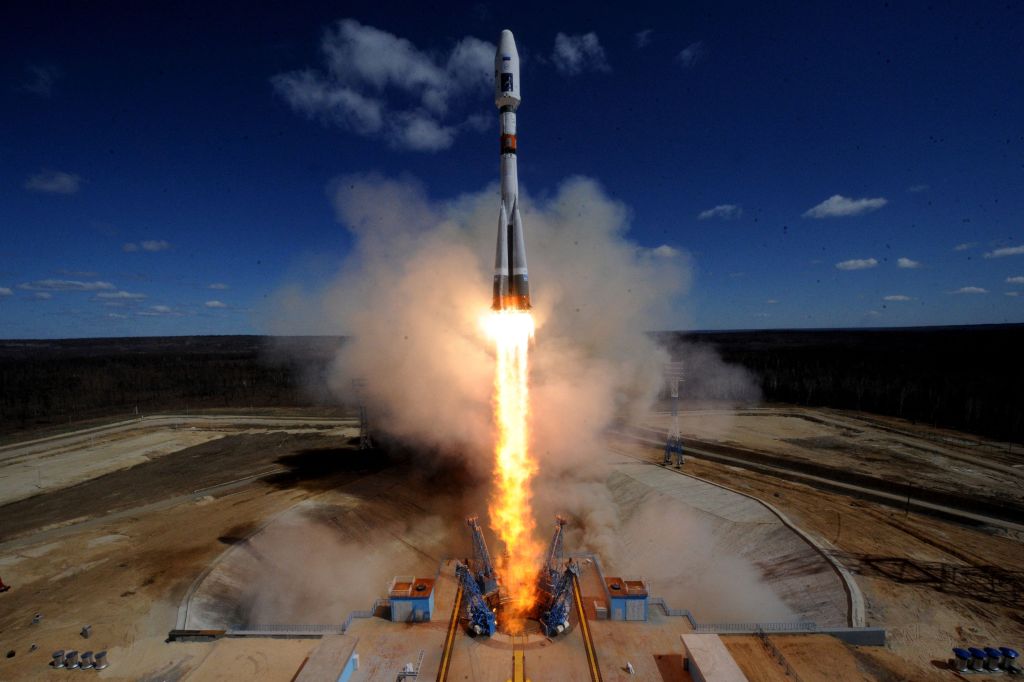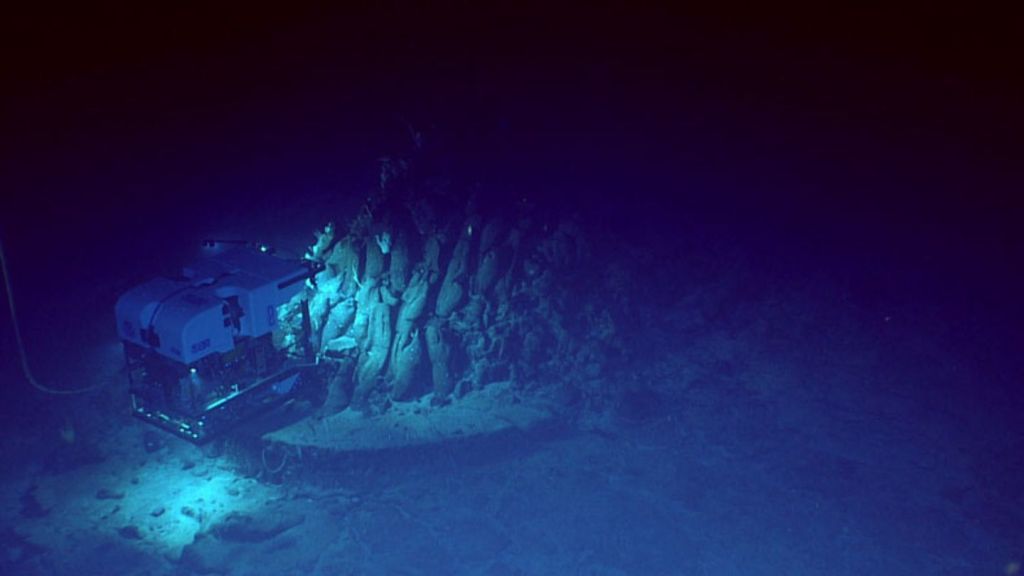NASA is poised to send a tiny satellite to an unexplored trajectory around the Moon that might one day serve as an orbital home to astronauts on a planned lunar space station known as the Gateway.
The Cislunar Autonomous Positioning System Technology Operations and Navigation Experiment (CAPSTONE), a microwave-sized spacecraft built by the company Advanced Space, is currently scheduled to launch into space from New Zealand on Monday, June 6.
Videos by VICE
If all goes to plan, it will become the first spacecraft to test-drive a zone known as the near rectilinear halo orbit (NRHO), a bizarre path around the Moon sculpted by the gravitational pulls of Earth, the Moon, the Sun, and even the planet Jupiter. The special elongated orbit hits a sweet spot for the Artemis program, a major effort led by NASA that aims to return humans to the Moon’s surface this decade, more than 50 years after Apollo 11 astronauts Neil Armstrong and Buzz Aldrin became the first humans to set foot on an extraterrestrial world.
Now, the CAPSTONE team—which includes the private space companies Advanced Space, Tyvak Nano-Satellite Systems, Stellar Exploration, Inc., and Rocket Lab—await this first small step toward the giant leap envisioned by the Artemis program. In addition to flying in this mysterious orbit, the mission will also pioneer a next-generation communications platform that could greatly simplify deep space exploration.
“It is extraordinarily fun to sit and think through what [CAPSTONE] is going to be capable of, and how we could launch spacecraft to these destinations,” said Justin Treptow, NASA’s Small Spacecraft Technology Program (SSTP) deputy program executive in the agency’s Space Technology Mission Directorate, in a call. “But to actually go out and do it is very different.”
“Ultimately, CAPSTONE is a flight test,” added Christopher Baker, who serves as the program executive for SSTP, in the same call. “The role of a flight test is to separate the real from the imagined, and that’s what we’re setting about doing here. I’m really looking forward to transferring that theoretical knowledge into actual operational experience.”
Whereas the historic Apollo Moon missions placed astronauts on the lunar surface for a few days, at most, the Artemis team hopes to send crews to the tantalizing south pole of the Moon for stays that may last weeks or possibly months. The Gateway, a key part of this vision, will serve as a base for astronauts and cargo, as well as an eventual staging point for missions that might venture to destinations further into deep space, such as Mars.
Ideally, the Gateway requires an unobstructed view of Earth to enable constant communications, a trajectory that is conducive to crewed operations at the lunar south pole, and a relatively simple orbital entry process. That’s where the NRHO comes in.
“With the NRHO, from the Earth’s surface, you can see the entire orbital path of soon-to-be CAPSTONE, and eventually Gateway,” Treptow said. “You can have uninterrupted comms with a spacecraft in that orbit because you have constant unobstructed views of it as it’s going around the Moon. That’s pretty advantageous if you’re doing a mission out there supporting astronauts.”
In addition, this highly elliptical orbit traces a seven-day circuit around the Moon that extends for 1,000 miles above one lunar south pole, and then some 43,500 miles over the other pole. CAPSTONE and Gateway will follow a path designed for a distant pass over the south pole, which extends the time that a spacecraft will spend over this key region for future Artemis crews.
“There are a couple places in space between the orbital bodies that have unique properties,” Treptow explained. “Where [the NRHO] is balanced between the lunar gravity and the Earth’s gravity, it doesn’t need an awful lot of propulsion to get captured into that orbit, at least if you’re if you’re going to it from a ballistic trajectory. It’s an even lower-energy capture than doing a low-lunar orbit which allows you to either get more spacecraft there or to utilize less fuel and be more efficient.”
All of these features make NRHO an exciting location for a space station, but there are many open questions about this unexplored realm that need to be answered before any astronauts venture there. CAPSTONE is tasked with providing this reality check, which it will hopefully accomplish after its launch on Rocket Lab’s Electron vehicle.
Once it is in space, CAPSTONE will perform a series of clever maneuvers, including leveraging the gravitational pull of the Sun to gradually hoist it into its target altitude. The satellite is designed to feel out the NRHO for at least six months, and possibly as long as a year or two, before it intentionally crashes into the lunar surface at the end of its mission.
“Operationally, because no one has sent a vehicle into the NHRO, the Gateway operations team is going to be very interested in how well the spacecraft can determine its orbit,” Treptow said. “Because there’s so many small forces that are coming into play, being able to accurately know where you are and what direction you’re going in—your position and velocity—is really critical to being able to stay on the NRHO pathway and not falling out of it. The resolution that you have on your position and velocity allows you to more carefully use your propellant so you can have a longer lifespan in that orbit.”
In addition to paving the way for Gateway, CAPSTONE is also equipped with a technology demonstration called the Cislunar Autonomous Positioning System (CAPS) that will test out software that determines the satellite’s position in space without relying on tracking stations on Earth. This is part of an effort within NASA and other organizations to develop an autonomous navigation system that could revolutionize communications for deep space missions far beyond our planet.
“This mission has been something we’ve been working on here for two-and-a-half years,” Baker said. “Partnering with our commercial partners on it has been a fast-paced, risk-tolerant activity and it’s come down to a couple of weeks here before we see it on its first step into conducting its operation.”
“We’re looking forward to learning as much as we can from it,” he concluded.





